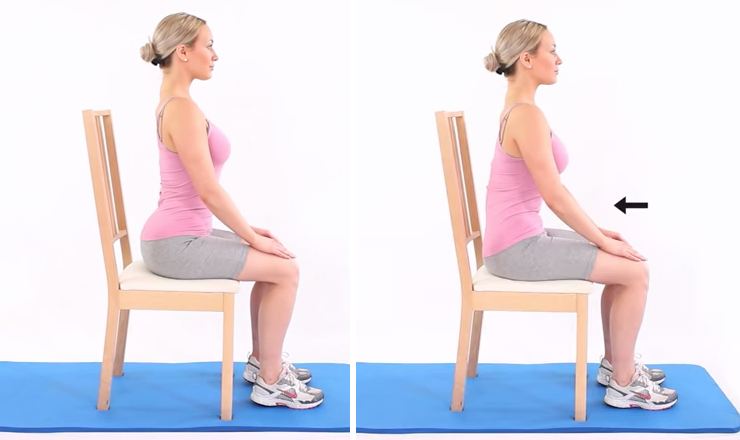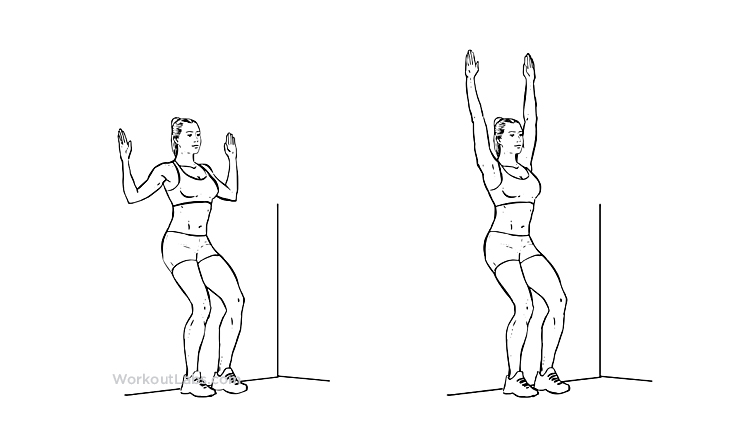ENTER YOUR EMAIL TO RECEIVE OUR WEEKLY NEWSLETTER
Stand Up! The Road to Better Posture
Improve your posture to eliminate pain and prevent serious health issues.
By Georgetta Lordi Morque

Posture Coach and AmSAT-Certified Alexander Technique Instructor, Lindsay Newitter of the Posture Police.
. . . . . . . . . . . .
UPDATED May 20, 2023
Hunching over computers and smartphones and then slouching on the couch for hours have been taking a toll. Our posture is suffering and causing a host of problems—from headaches to back pain—prompting more visits to therapists and a steady supply of Advil.
But pain is not the only side effect of poor posture. Slouching puts a strain on our bones, muscles and joints that over time can compress our internal organs, making it difficult to breathe and digest properly, reports WebMD. What are other factors that may contribute to poor posture? According to the American Chiropractic Association, these include a poor work environment, where we have to hunch over desks or computers; chairs with non-supportive backs; and tasks that require us to stand or sit for hours at a time. Additional factors include stress, obesity, weak postural muscles, abnormally tight muscles and high-heeled shoes.
 Although this may sound like doom, the good news is that posture can be corrected. Sara Mikulsky, at right, is a doctor of physical therapy who believes in taking a holistic approach to health by treating both the mind and the body. In 2007, she earned her doctorate in physical therapy from Boston University. She begins treatment with patients by working on proper posture, since posture is at the “core” of many issues impacting hips, knees, shoulders, necks and the entire body. “It’s not just about standing up straight, but more about posture awareness,” says Dr. Mikulsky, who over the past decade has observed changes in the way people use their bodies, due often to the increase in a sedentary lifestyle and the use—or misuse—of technology.
Although this may sound like doom, the good news is that posture can be corrected. Sara Mikulsky, at right, is a doctor of physical therapy who believes in taking a holistic approach to health by treating both the mind and the body. In 2007, she earned her doctorate in physical therapy from Boston University. She begins treatment with patients by working on proper posture, since posture is at the “core” of many issues impacting hips, knees, shoulders, necks and the entire body. “It’s not just about standing up straight, but more about posture awareness,” says Dr. Mikulsky, who over the past decade has observed changes in the way people use their bodies, due often to the increase in a sedentary lifestyle and the use—or misuse—of technology.
Good posture, explains Dr. Mikulsky, can be critical as we age: “When we slouch, an abnormal amount of stress, gravitational forces and strain are placed on parts of the spine.” Although other factors can also come into play, she notes that over time there is a risk that the stress can cause a fracture from prolonged abnormal forces. “It takes retraining and rethinking about posture to make improvements,” she says. “Becoming mindful of how your body moves in space and where your head is aligned is key. Are you looking down when you walk? This is often common among seniors who fear tripping on the sidewalk or falling. And when you sit, are you twisted in the corner of a couch—or is your back supported by a firm cushion?”

Abdominal contraction exercise (by Rehab My Patient)
. . . . . . . . . . . .
To treat posture issues, good therapists evaluate a patient’s alignment and movement patterns; then they work on gently mobilizing the joints where needed. Afterwards, they teach you how to stand correctly, line up your hips, shoulders and head properly, and perform exercises when your body is properly aligned. Depending upon your needs, training typically focuses on strengthening your core muscles, which are your abdominal (stomach) muscles, lower back stabilizers—hip and gluteal (buttocks) muscles, and the stabilizing muscles of the upper body, which include your scapula (shoulder blade) muscles, multifidus (deep muscles along your spine), rhomboids (deep muscles in your upper back near your spine), and serratus (muscles of the thorax—or chest cavity—that are attached to your ribs and vertebrae).

Shoulder retraction exercise (by Rehab My Patient)
. . . . . . . . . . . .
Exercises can include seated abdominal contractions (top), shoulder retraction (above), wall angles or “angels” (below), and more. Usually you can see changes in the muscle fiber within two to three months with healthy tissue, says Dr. Mikulsky, who is also a certified personal trainer, yet with injuries, progress can take longer. “Some people are more motivated and diligent about doing their exercises, while others need more reminders,” she observes.

Wall angle exercise (by Workout Labs)
. . . . . . . . . . . .
How you are set up at home is another important factor in postural health. Dr. Mikulsky, who is also an ergonomic specialist, strongly recommends getting a professional evaluation of your computer and desk arrangement and finding supportive furniture. Good shoes that will support your feet are also critical. While standing desks have become popular, Dr. Mikulsky says that prolonged standing or sitting can cause fatigue, but she believes it’s good to have options.
There’s a whole market of devices—braces, tapes and tech gadgets—that promise to hold us up. Intelliskin Shirt, a fitted compression shirt created by a chiropractor, uses materials like Kinesio Tape in strategic areas to help train your muscle memory by aligning your shoulders and spine. Dr. Mikulsky warns against relying solely on products for posture improvement, but she agrees that some can be helpful reminders and tools if they are part of the learning process.
Yoga, the Alexander Technique and other exercise programs also focus on posture and alignment. Dr. Mikulsky recommends starting with one-on-one sessions before enrolling in a group class so that you can understand more clearly how the class exercises apply to you—keep in mind that not all bodies are the same.
To find a good physical therapist, Dr. Mikulsky advises that you ask your doctor, orthopedist and friends for recommendations or search online at the Hospital for Special Surgery’s rehabilitation network, which includes a membership of over 150 outpatient facilities.
Also see our articles, Gyrotonic: Dance-like Flowing Exercise Method and New York City: A Mecca for Yoga Classes by Georgetta Lordi Morque.
. . . . . . . . . . . .
Sampling of Posture Specialists in New York City
Dr. Sara Mikulsky PT, DPT, NASM-FNS, NASM-CPT, CEAS, Wellness Physical Therapy, PLLC, 62 East 88th Street, 650-544-0116. Doctor of Physical Therapy, certified personal trainer, fitness nutrition specialist and certified ergonomics specialist. Takes a holistic approach to wellness. Dr. Mikulsky conducts sessions at a patient’s home throughout New York City; she is also the clinic director of H&D Physical Therapy.
The Posture Police Alexander Technique with Lindsay Newitter, 34 West 28th Street, 646-300-1379. Private and small group classes to improve posture, balance and breathing and reduce strain in everyday activities. Informative blog with posture tips. Lindsay, who once suffered from scoliosis, has been featured in The New York Times and on Good Morning America.
New York Corrective Chiropractic Care 280 Madison Avenue, 212-399-1001. Dr. A. Morse, DC, specialist in spinal and postural rehabilitation. Services include spinal and postural screenings, chiropractic care, nutrition counseling, physiotherapy and corrective exercises.
Back and Body Medical 133 East 58th Street, 212-371-2000. Offers a diverse assortment of treatments and modalities from chiropractic to physical therapy to acupuncture plus corrective exercises to improve posture.
New York Dynamic Neuromuscular Rehabilitation & Physical Therapy 130 West 42nd Street, 866-938-7779. Comprehensive facility with specialists in chiropractic, sports medicine and physical therapy who treat a range of issues using a variety of methods, including posture re-education and treatment.
Downtown Broadway Chiropractic 225 Broadway, 212-227-2225. Dr. Jonathan Allen, DC has been providing chiropractic care to more than 5,000 patients since 1997, treating a variety of pain related conditions and posture correction.
Rates: Check with individual clinics. Many will accept your insurance, depending upon your plan, if you are recommended by a hospital or physician for therapy after a medical procedure.
. . . . . . . . . . . .
Georgetta Lordi Morque is an award-winning freelance writer and public relations consultant who focuses on sports, fitness and health.
You may enjoy other NYCitywoman articles by Georgetta Lordi Morque:
Collagen: Maintaining A Youthful Complexion
Specialists in Nutrition and Weight Control
How to Soundproof Your Apartment
Anti-Aging Benefits of Cosmetic Dentistry
Where to Get the Best Facial in New York City
Fight Aging with Strength Training












June 14th, 2017 at 5:08 pm
Yes, Alexander works. And a shout-out to my wonderful chiropractor, Dr. Isis Medina, NYC. —(signed) sloucher from way back